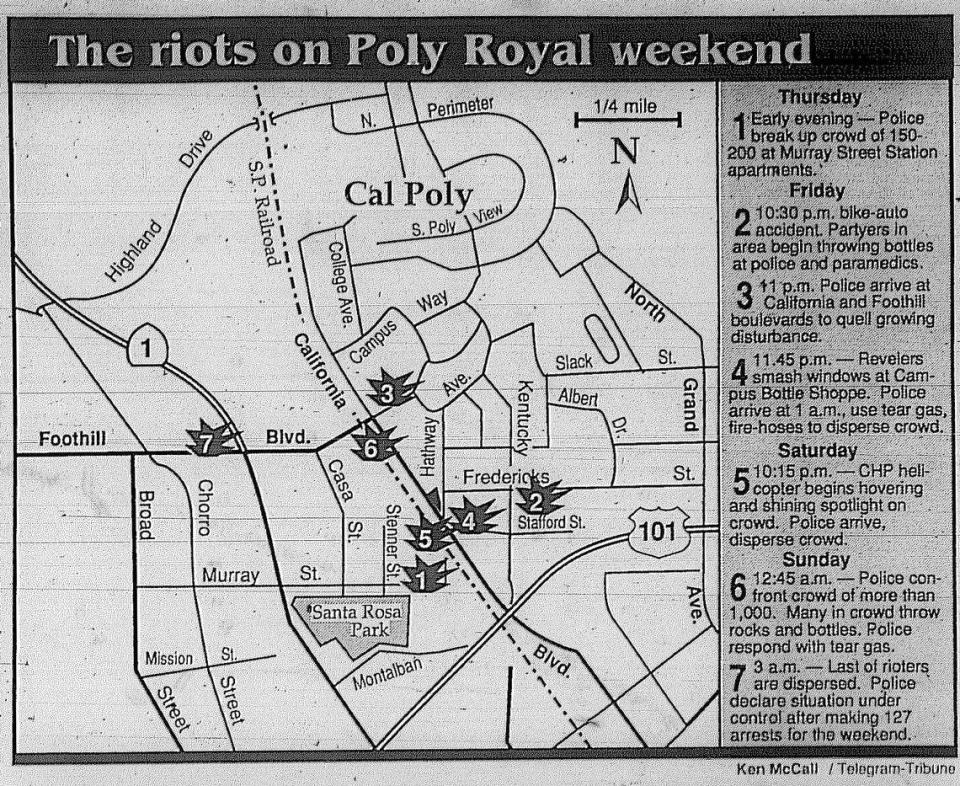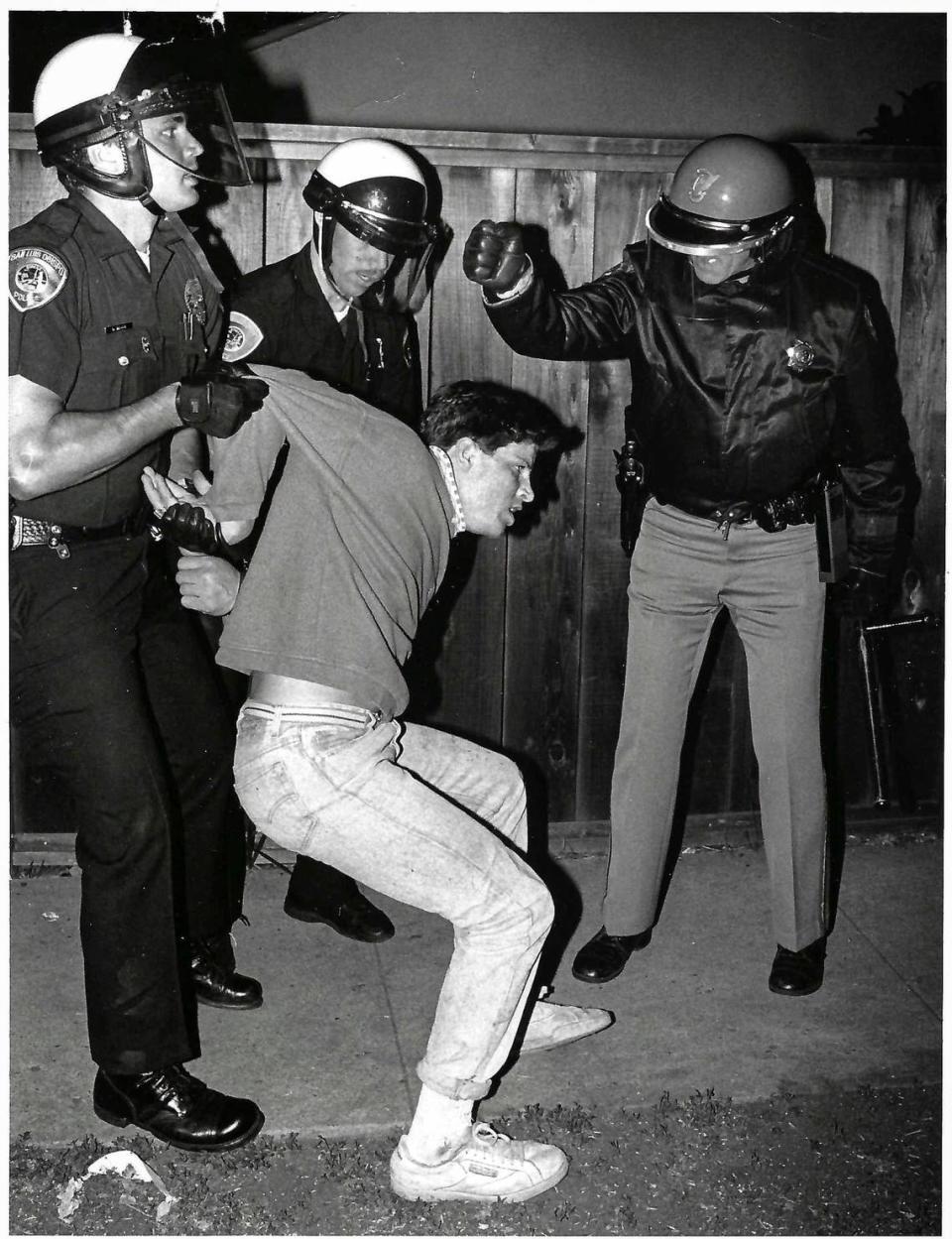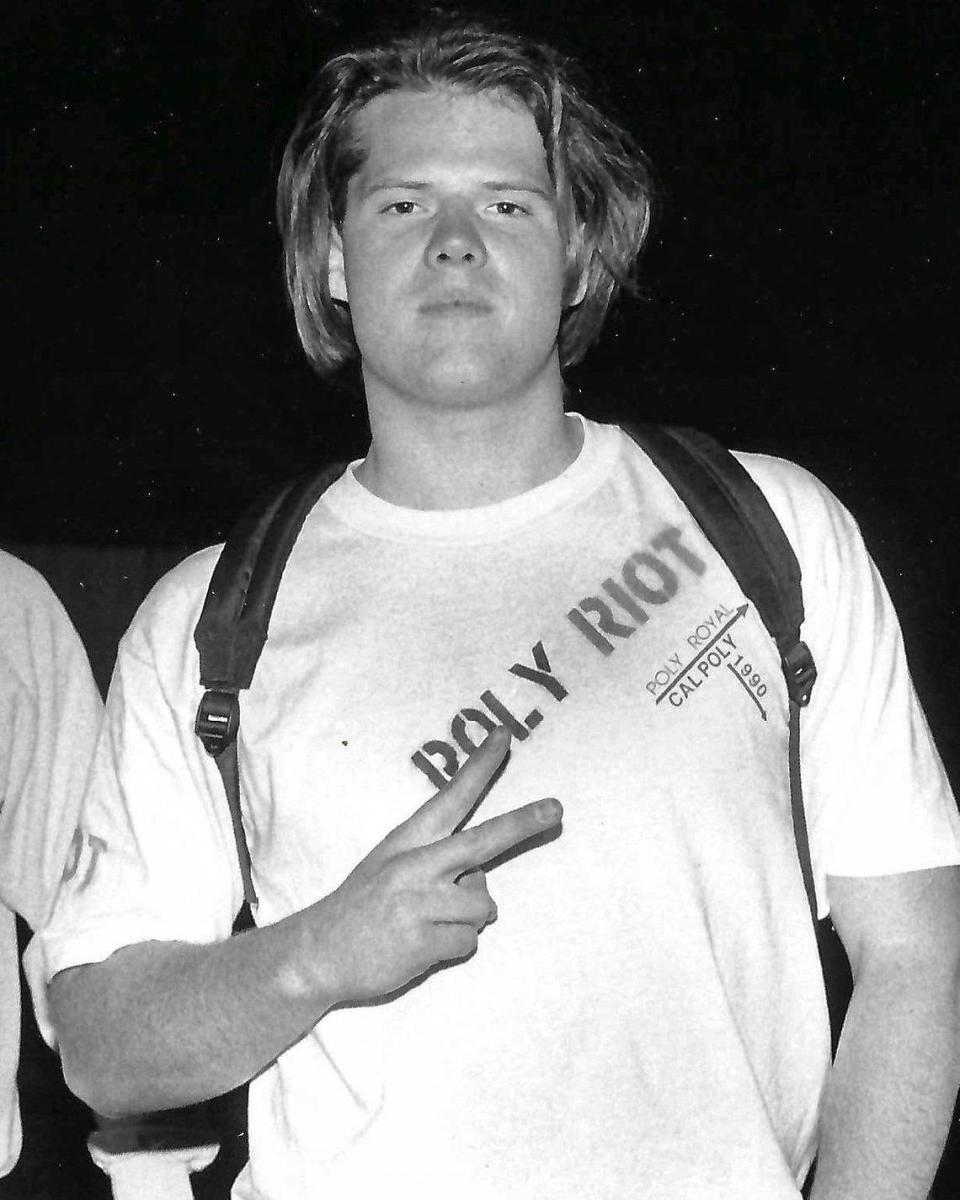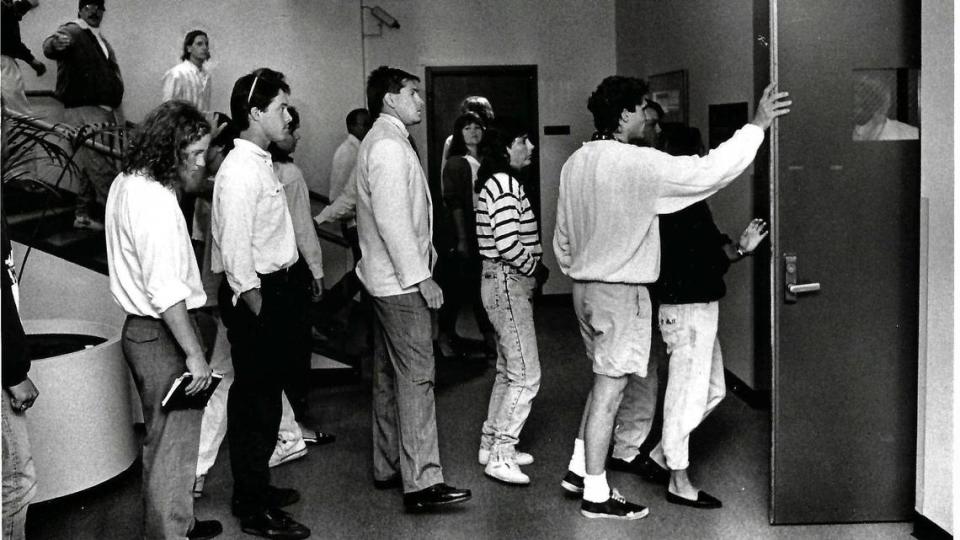St. Fratty’s was big — but Poly Royal spiraled out of control. See photos from the 1990 riot
Students and alcohol are an issue as old as time.
My late father told the story of being required to pour out a trunk full of rule-breaking beverages at a camp retreat.
The added variable of roving alcohol fueled crowds in San Luis Obispo is a more recent wrinkle.
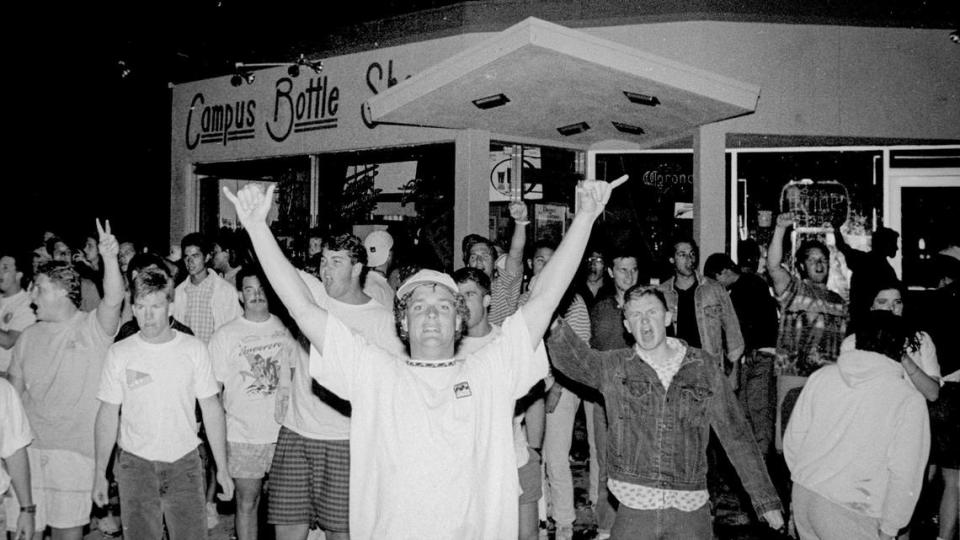
Cal Poly has had an intermittent series of episodes involving crowds and alcohol, spanning from Poly Royal in 1990, Mardi Gras in 2004, Cesar Chavez Day in 2012 and now St. Patrick’s Day, AKA St. Fratty’s Day.
The phenomena predates social media influencers, but the experience-seeking, “hold my beer” crowd has always been a part of the landscape. And the large number of students who flock to these events from outside the county can contribute to a sense of anonymity.
Former Cal Poly President Robert E. Kennedy understood this phenomena and did groundwork with anti-war protest organizations during the turbulent 1960s to keep lines of communication open, set expectations and keep a sense of shared community responsibility alive.
As he wrote in his biography, “many psychologists are of the opinion that the single most pervasive cause of crowds becoming uncontrolled mobs is the feeling of anonymity that permeates a crowd and gives individuals a feeling that no one they know or care about will know what they have done should they decide to pick up a rock and throw it through a window.”
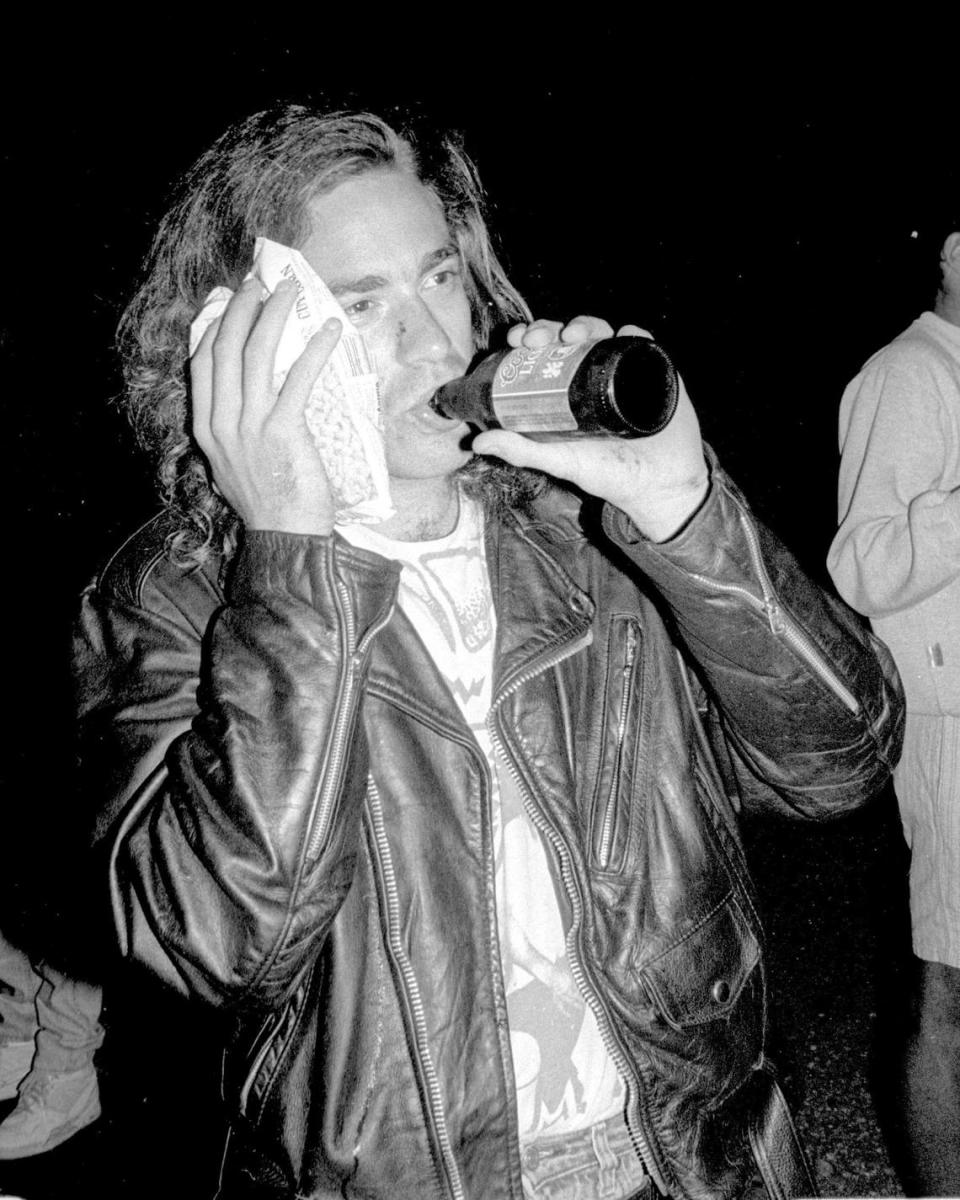
These sort of events have had major impacts on campus and student life when they happen — and potentially few more so than the infamous Poly Royal riot in 1990.
The two evenings of rioting eventually led to a re-branding of the campus Open House and a change in event planning.
Smashed windows, tear gas, fire hoses and injuries from thrown beer bottles were all part of the chaotic Thursday night to early Sunday morning events.
Law enforcement took a more aggressive approach in 1990 than in 2024, and tear gas, riot gear and fire hoses were all deployed.
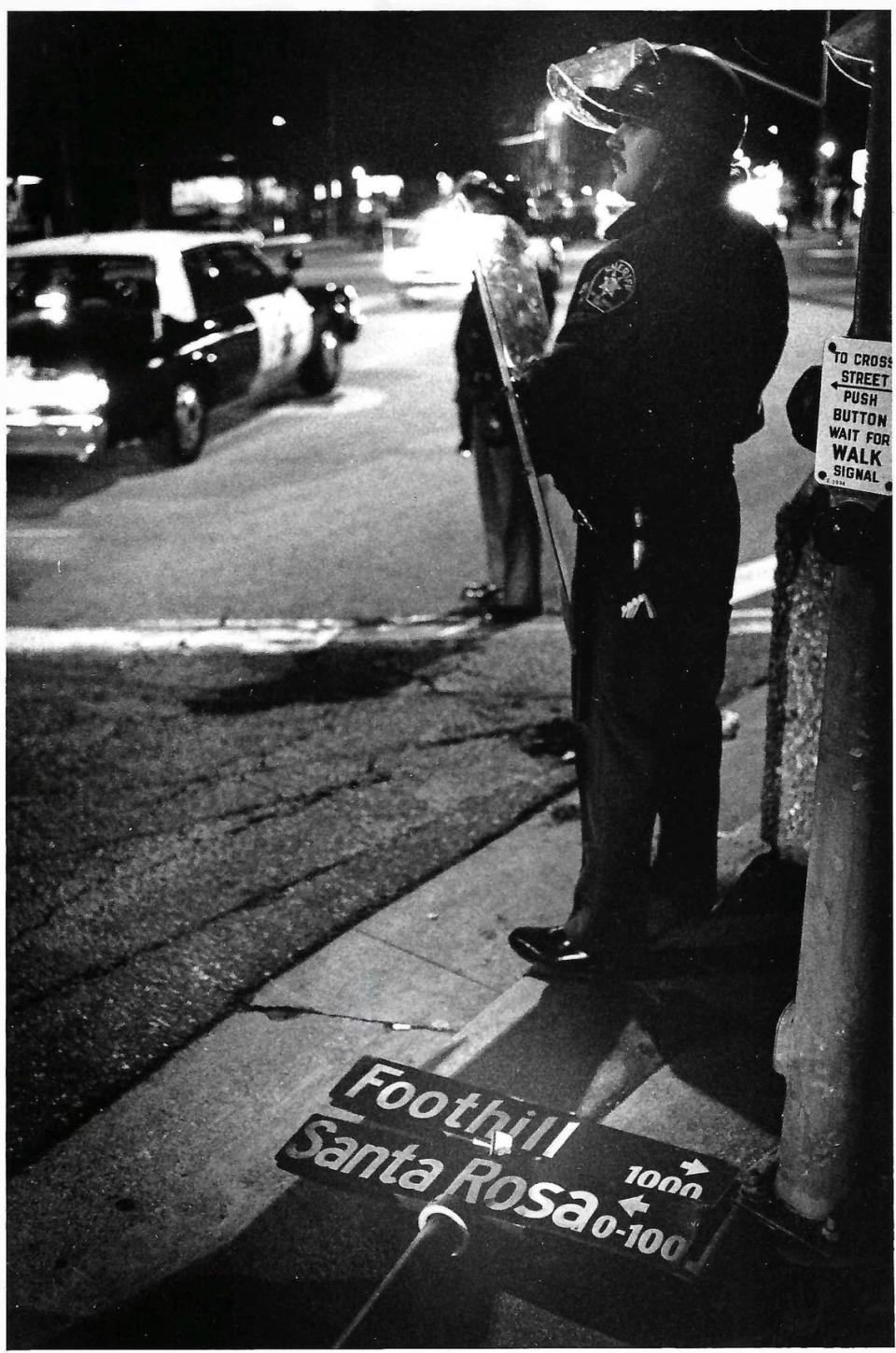
A contributing factor was the nighttime incidents had a darker edge.
Partiers threw bottles at police and paramedics responding to a bike vs. auto accident in a Fredericks Street neighborhood.
An early attempt to break up the crowd only compressed it, and with chants of “free beer, free beer!” the windows were smashed at the Campus Bottle Shoppe. Employees guarded the store swinging heavy bottles of wine to keep looters from storming the store.
It was an ugly and sometimes violent scene speaking as an eyewitness who was photographing it. There were moments where roving groups would either randomly throw beer bottles at partiers or pose for photos.
There were ultimately 127 arrests and at least 100 were injured.
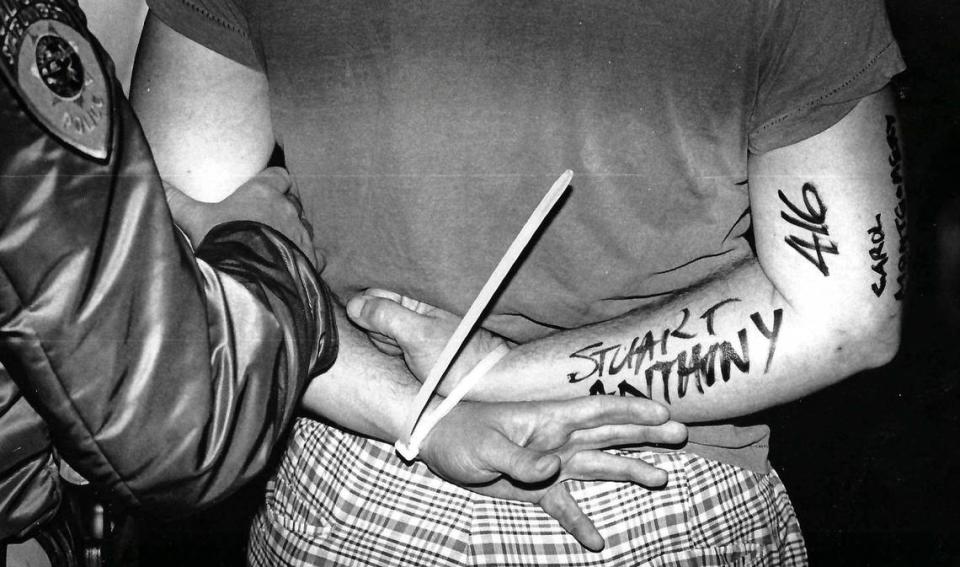
Reporter John Lynch who documented this year’s St. Fratty’s street gathering saw similarities, calling it a chaotic and claustrophobic scene with revelers jammed into a compact area and the mood wavering between a party atmosphere and an unfocused anger.
San Luis Obispo Police Chief Rick Scott has since warned St. Patrick’s Day party goers not to come next year.
Jan Greene wrote this story among several published April 30, 1990, focusing specifically on mob psychology.
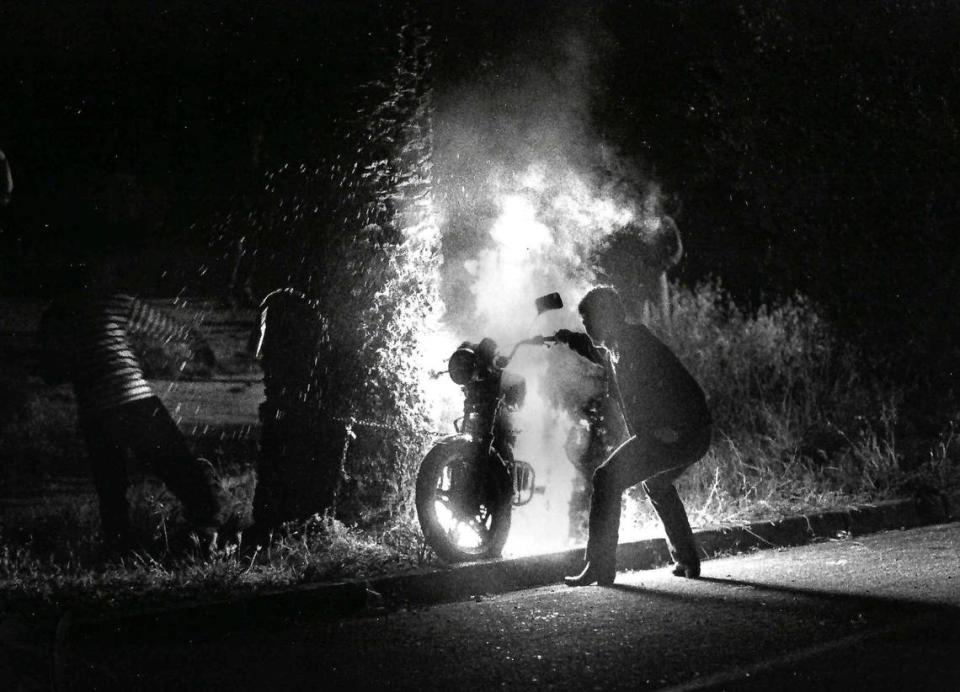
Drinking, mob rule took over: Lost inhibition prompted riots, experts say
Alcohol, crowds and warm weather.
Those were the three “inhibition-loosening” factors cited by trained observers of melees like the ones that hit San Luis Obispo on Friday and Saturday.
Based on what he had read about the incidents in the newspaper, “there were two issues that worked to loosen inhibition,” said Cal Poly psychology Professor Daniel Hawthorne.
“One was alcohol, and the other was people were in an anonymous condition.”
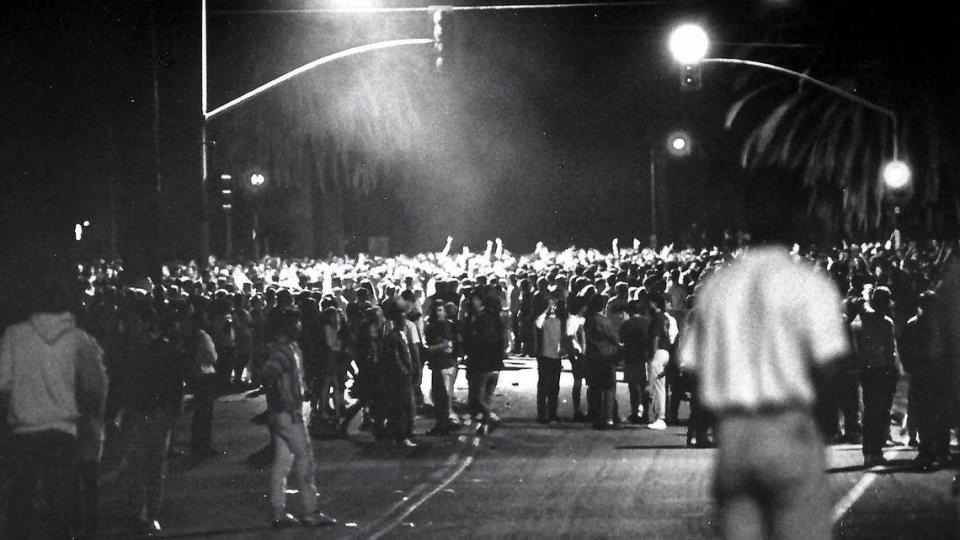
In other words, they were in a crowd of people and could do what they wanted without anyone knowing, he said.
The fact that warm weather had brought hundreds of partiers out of their houses and onto the streets also helped heat up the situation.
Without knowing exactly what event finally sparked the violence, Hawthorne said, it is clear that “special contagion” took over once the first bottle was thrown. That freed everyone else in the crowd to do things they wouldn’t normally do because of the anonymity of the mob, he said.
Sgt. Tom Barton of the Palm Springs Police Department agreed that mob behavior is probably the best explanation for the Poly Royal violence.
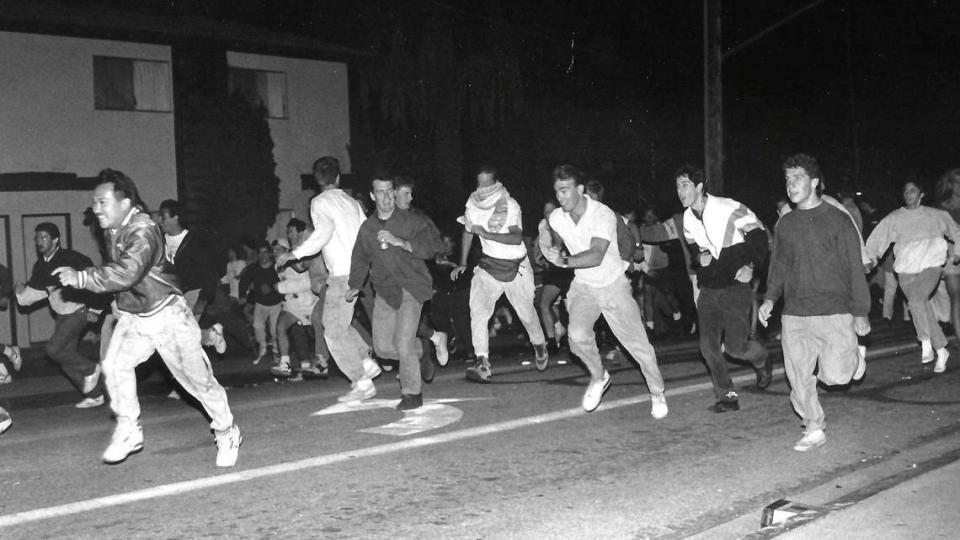
“What you have is a mob without leadership. A mob has no thinking ability,” said Barton, who has led his department’s efforts to control 100,000 Easter Week revelers for the past five years.
Palm Springs has had increasing problems with young drunken people at spring break. Last month, the city’s police arrested 1,800 people and issued 7,000 tickets during a 10-day period.
“When you’re dealing with a mob, it’s just spontaneous,” Barton said. “That’s why we keep our fingers crossed. They could destroy the city.”
Barton’s philosophy is to “manage the atmosphere” by issuing a lot of tickets during the day for jaywalking and throwing bottles and arresting people drinking in public.
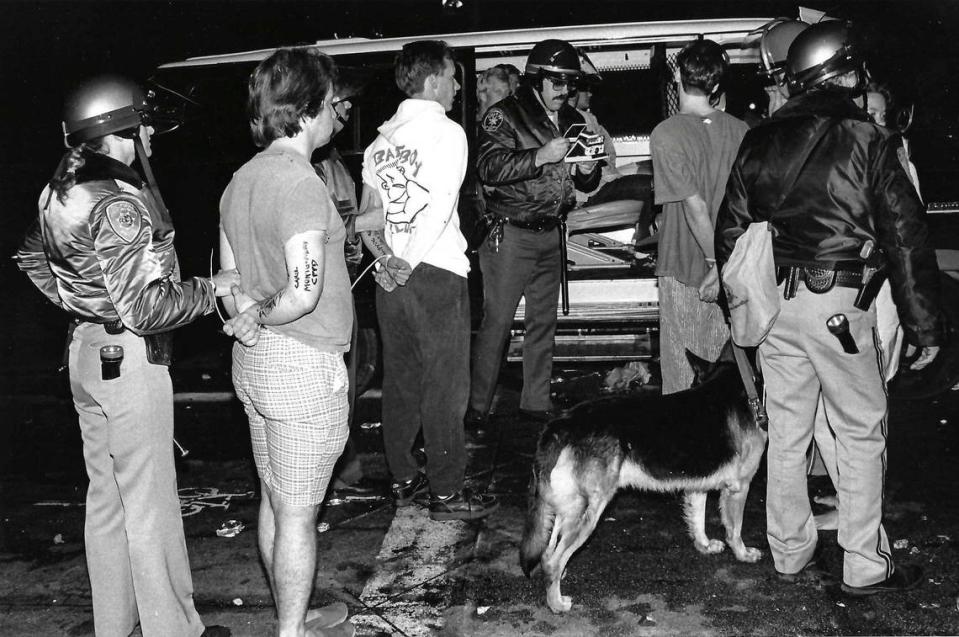
But the appearance of the police themselves can have an antagonizing effect on a crowd.
“You don’t have to be a psychologist to know when (the police) come in to try to control the situation, things escalate,” Cal Poly’s Hawthorne said.
Hawthorne has seen his share of riots, having spent 1958 to 1970 working on his master’s degree at University of California at Berkeley.
The difference between the politically motivated riots at Berkeley and the Poly Royal fracas is obvious. Besides hostility to the police and cries for “Free beer!” there was no goal to the Cal Poly riots.
“Where you have a political kind of thing, you have leaders and some stated goals or objectives,” Hawthorne said. “This didn’t seem to have either.”
Hawthorne, who has taught at Cal Poly for 17 years, rejected the idea that the riots were precipitated by some underlying anger students have about conditions at the school.
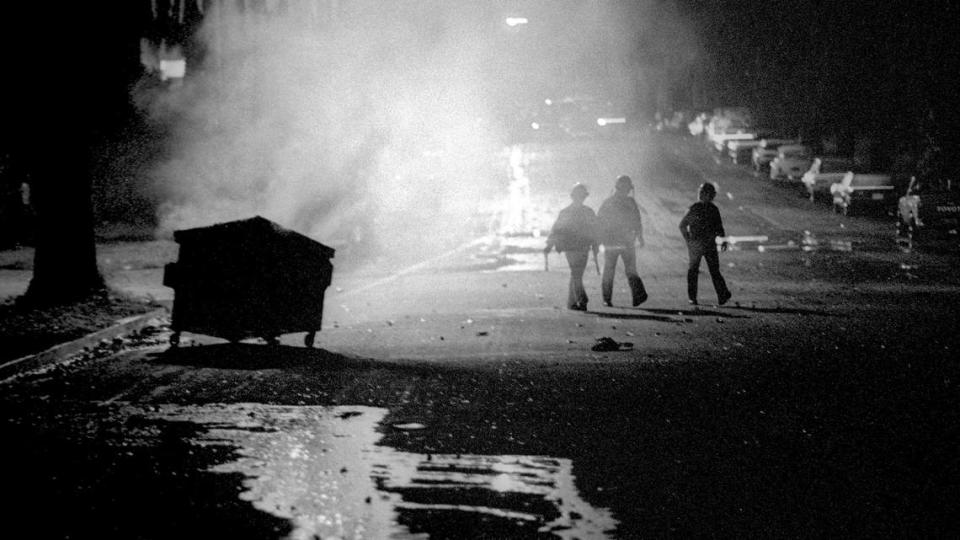
Bill Roalman, a San Luis Obispo city councilman, said he saw a lot of anger in some of the rioters, and it puzzled him.
“I was struck by the anger in some of the people,” Roalman said. “Why? Why were these people so pissed off?”
Linden Nelson, a social psychologist who teaches at Cal Poly, believes that a kind of “adolescent ritual” of challenging authority also contributed.
“The young people had an expectation that they would be treated unfairly because they were partying,” said Nelson. “That made it easier to act in a hostile way toward police and authorities.”
Another Cal Poly educator blamed cultural attitudes.
“Our society condones drinking by young men,” said Laura Lehmann, a part-time psychology instructor.
